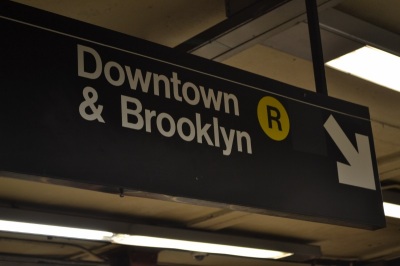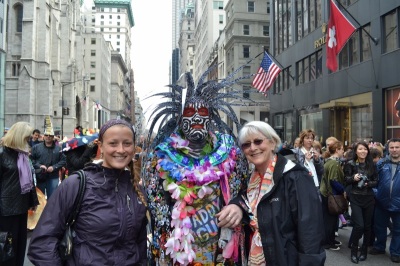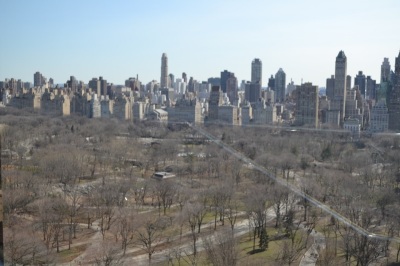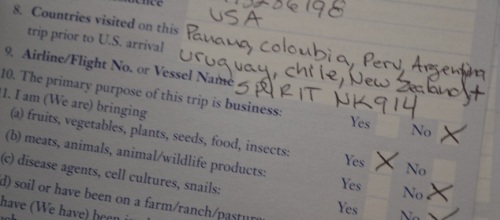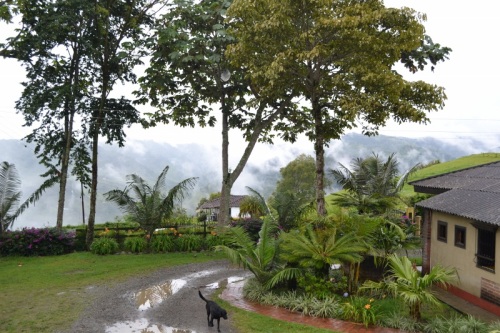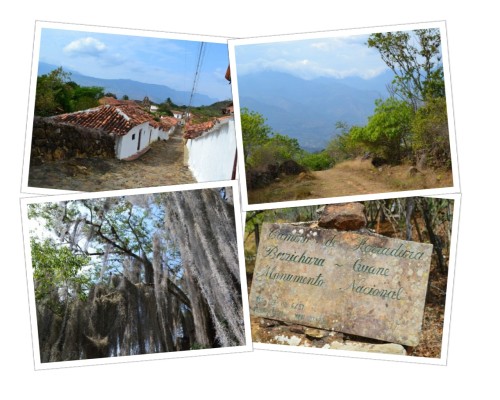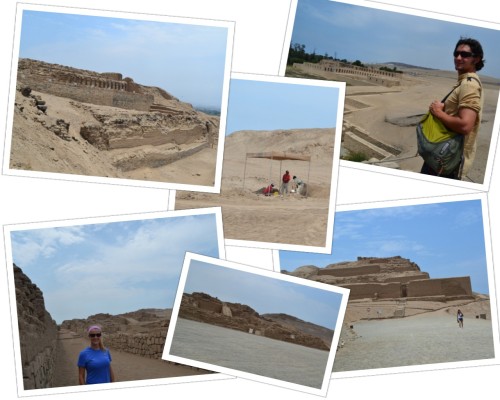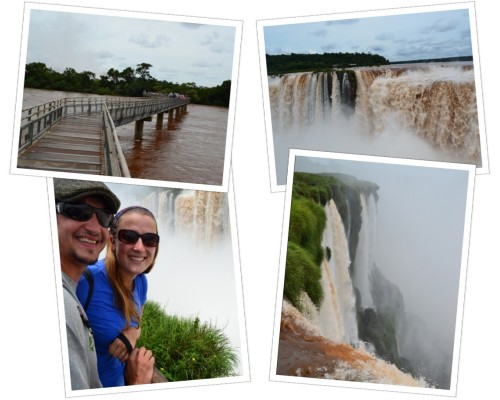After a few days of readjusting to life back in the US, we met Amy’s mom in New York. The three of us were first time visitors, and, man, there sure is a lot to see and do in the Big Apple! After spending two weeks in the city, we were able to put together a pretty good list of our favorite sights and activities. Just so happens that after we made the list, we realized that most of these are either free or pretty economic ways of keeping yourself busy in New York; which is a good thing after 15 months traveling the world.
The Brooklyn Bridge
The Brooklyn Bridge is a New York City icon, and walking the bridge on a clear day from Brooklyn to Manhattan is awe-inspiring. It offers amazing views of Lower Manhattan, the Manhattan Bridge, Empire State Building and Statue of Liberty. Walking has been one of our favorite activities while traveling, and crossing the bridge on foot was no exception.
Grand Central Terminal
Another free site, this transit center is one of the oldest in the country and has been a landmark in New York City for the last 100 years, but Grand Central is so much more than just a place where journeys end and begin. It is home to amazing architecture, art exhibits, shops and one of the coolest classic oyster bars we have ever visited. We are not huge oyster lovers, but with over 30 different types on the menu, you can’t really go wrong.
Chinatown
Out of all of the countries that we visited during our RTW trip, China was one of our favorites. The food, the smells, the language, the people – all were so foreign and intriguing. Going to NYC’s Chinatown felt quite a bit like stepping back into the real deal. If you are looking for a taste of China, but can’t make the flight across the Pacific, look no further than this little slice of heaven in Downtown Manhattan.
Highline Park
One of the coolest things about visiting large cities is learning about how they have morphed over the years. Highline Park is just one of New York’s many revitalization projects. The elevated rail system that now makes up the park was built as a solution to the rapidly growing number of rail accidents in the 1930s. Towards the end of the century, the rail line was abandoned, in disrepair and on the verge of being demolished before community members came together to develop the idea of turning the Highline into a park. The park now runs for one mile through the Chelsea neighborhood.
The Subway
NYC’s subway is one of the oldest systems in the world with 34 different lines and almost 500 stations. As public transportation enthusiasts, riding around the boroughs of NYC was like a dream. We know it seems kind of dorky, getting stoked about a subway system, but it really is an amazing public service. Although some of the stations are a bit run down, and it isn’t the cleanest transit system we have come across during our travels, it is probably the most impressive when you consider its age, the cost of a ride, and the extensive routes which it offers. Our tip: if you are going to be in NYC for more than 4 days, buy a 7-day pass. For just $30, it will take you everywhere you want to go for a fraction of what taxis will cost you.
Staten Island Ferry
Want great views of NYC from the water? Forget the tour boats; take the free ferry from the Whitehall Ferry Terminal in Manhattan to Staten Island! The trip takes you along-side the Statue of Liberty and offers great views of the Downtown skyline, bridges, and Ellis Island. The Staten Island Ferry is definitely a MUST for any first time visitor to New York.
Historic neighborhoods
While the NYC subway system is a sight to see in and of itself, to fully appreciate the city you have to do some serious walking as well. As one of the oldest cities in the US, New York has some wonderful historic neighborhoods which feature classic American architecture and were once home to the country’s founding fathers. Brooklyn Heights and Riverside Park were two of our favorites.
Easter Parade
Our visit to NYC happened to coincide with the annual Easter Parade, one of the only times when 5th Avenue is completely closed to traffic. We spent the morning wandering down the street checking out the creative hats and costumes people created to celebrate this 140 year old tradition.
Brooklyn Museum
Sure, there are the big museums like MoMA, the Met, the Guggenheim, but we most enjoyed the lesser known Brooklyn Museum. The exhibits are diverse, the crowds less overwhelming and the price (simply a donation in the amount of your choosing) makes it accessible for everyone.
Central Park
Last but certainly not least, Central Park. What an amazing place to have at the heart of a city. We developed an appreciation of its vast size by walking the park from end to end one afternoon, which took us three hours!











